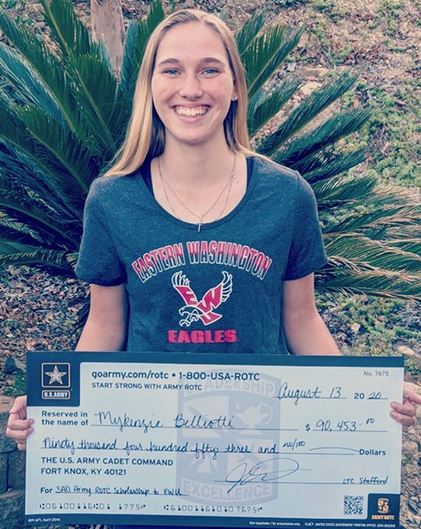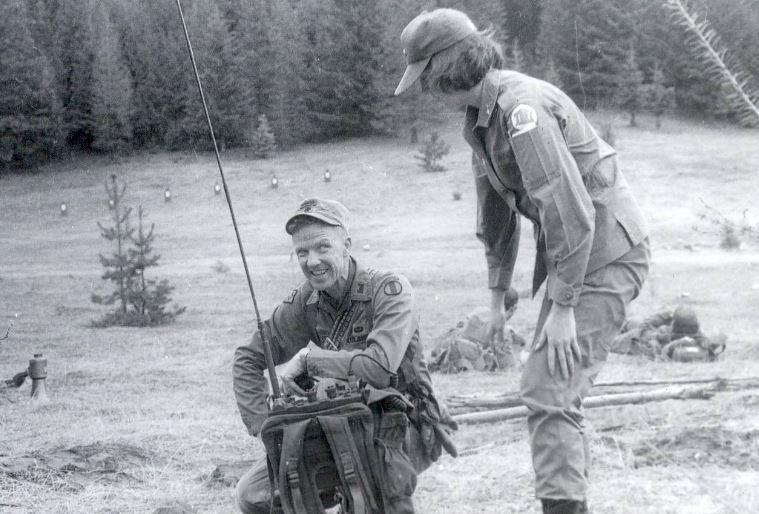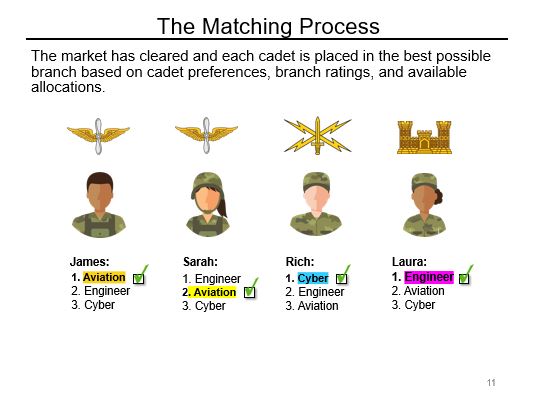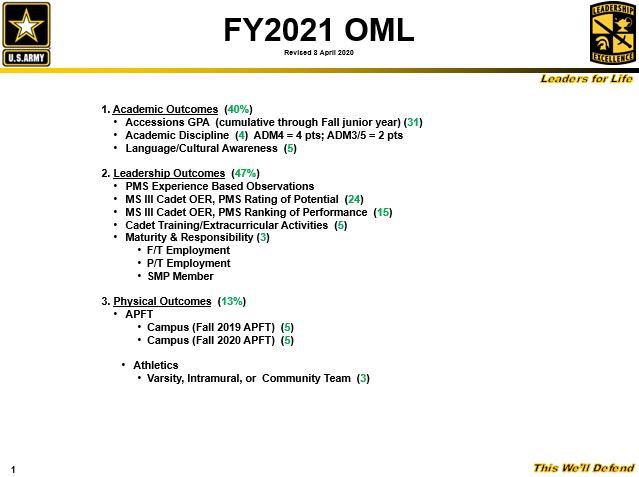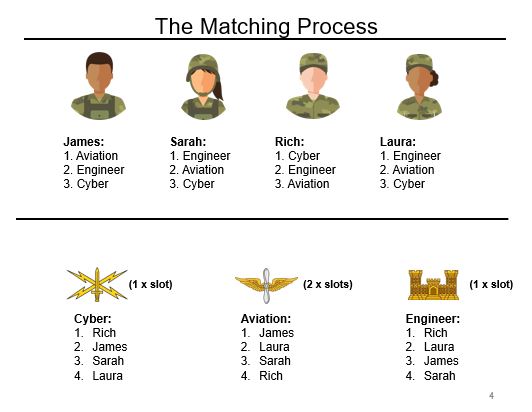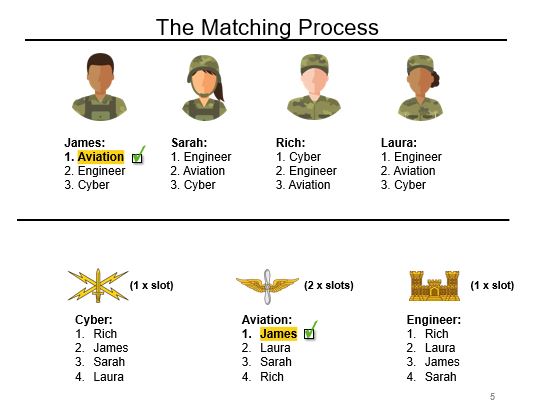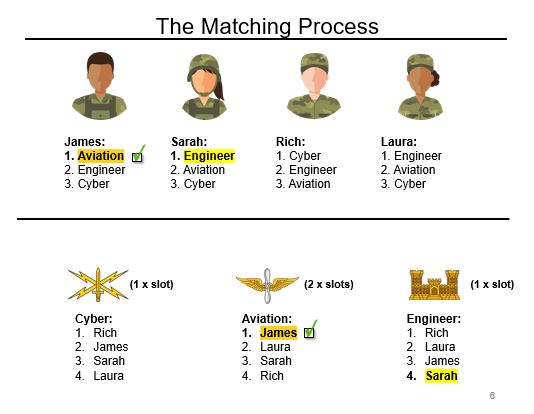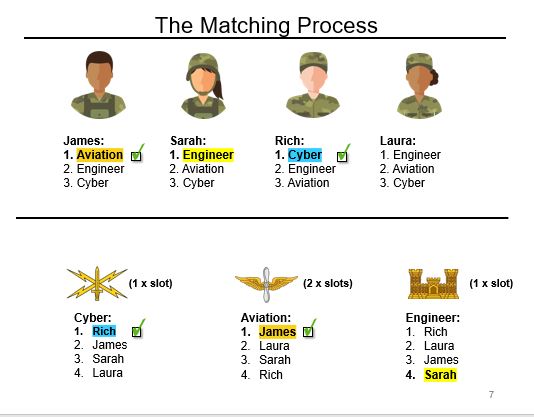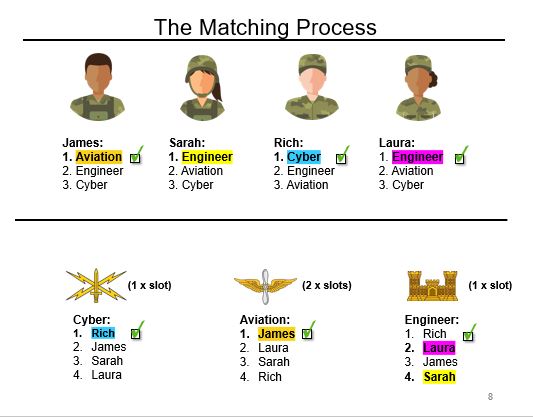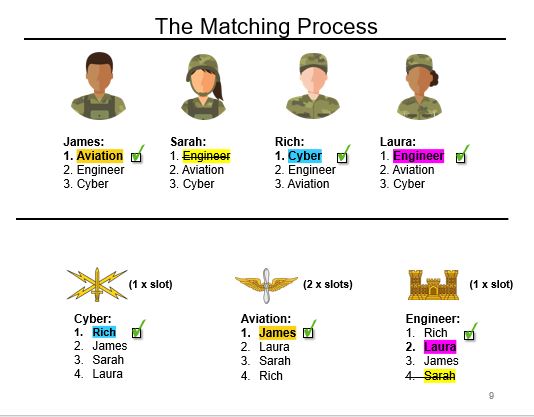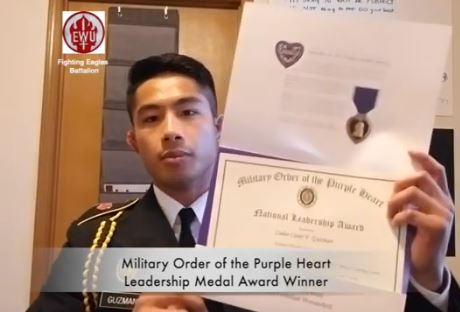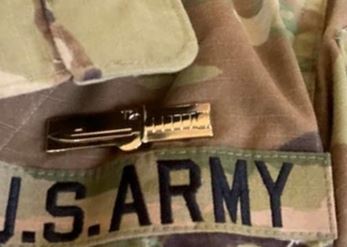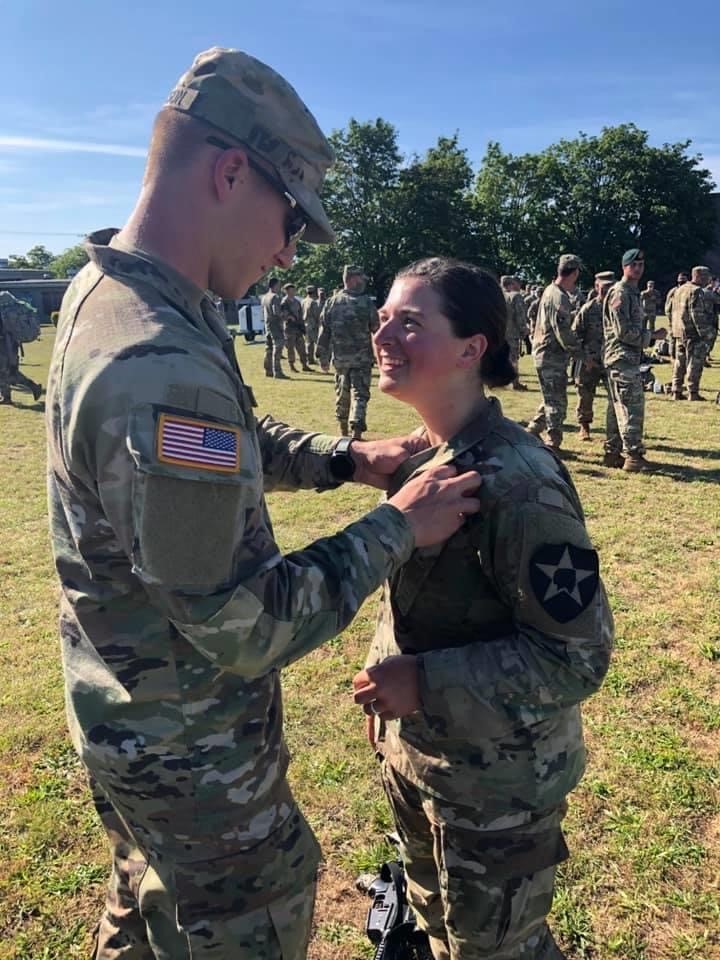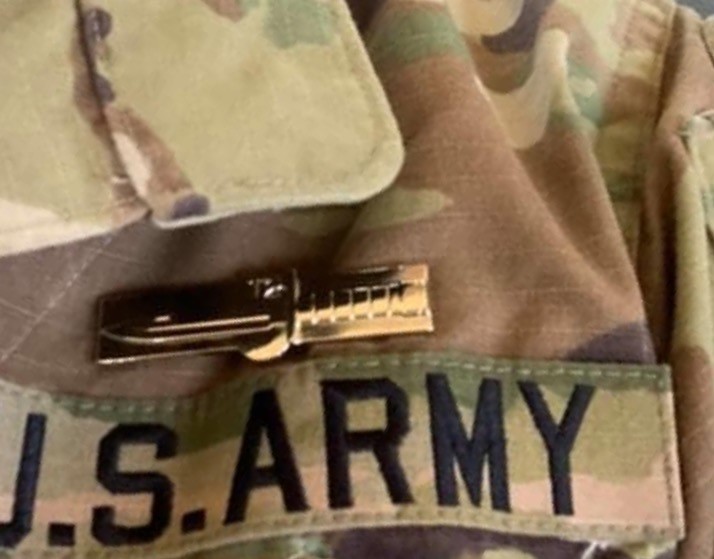Due to the ongoing coronavirus pandemic, the Advanced Camp training that generally third year Army ROTC Cadets attend was cancelled this summer. The annual training Cadets that go through at Advanced Camp will instead be made up during the school year by individual ROTC programs. However, the cancellation of Advanced Camp along with the implementing of the new branching process has caused many changes to the Fiscal Year (FY) 2021 accessions timeline. The below chart shows the latest information on the FY2021 Accessions Timeline. This timeline applies only to Cadets who are commissioning in FY2021. MS-IV Cadets that commission in FY22 are expected to attend Advanced Camp and receive an updated accessions timeline.
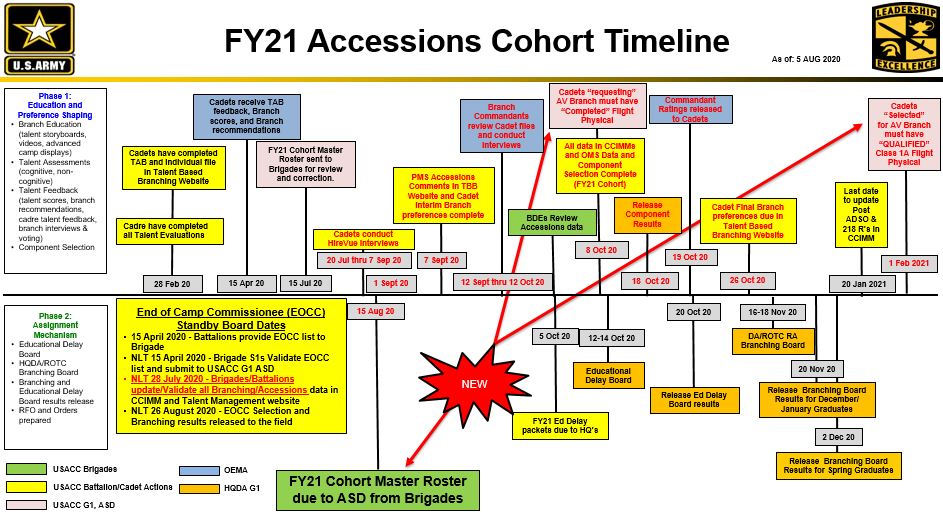
Upcoming Key Dates:
- 20 July – 7 September – HireVue Interview Period
- 15 Aug – FY21 Cohort Master Roster (Verified) due to HQ USACC, ASD, ORSA
- 31 August – Cadets give final Component Preferences (Not Branch Prefs) to HRAs
- 1 September – If AV “candidate” – Class 1A Flight Physicals completed
- 7 September – Cadet File updated with final Interim Branch Preferences
- 5 October – Educational Delay packets due to HQ, USACC
- 8 October – If AV “candidate” – Class 1A Flight Physicals Completed
- 18 October – Component Selection results released
- 19 October – Branch Ratings released to Cadets via TBB Website
- 26 October – Cadet Final Branch Preferences Due
- 16-20 November – USACC Branching Board
- 20 November – Release December/January Branching Assignments
- 2 December – Release of Spring 21 Branching Assignments
- 1 February 2021 – If AV “selectee” – Class 1A Flight Physical “Qualified”
Interviews
From 20 July-07 September, Cadets branching in FY21 need to be conducting their interviews with the branches they are interested in over the HireVue app. Any Cadet that has not received an email from HireVue needs to immediately contact their HRA. The branches will view the HireVue interviews and then contact Cadets for follow up interviews. These interviews are extremely important in the branching process and Cadets need to take them seriously. Make sure you either wear your uniform or dress formally for the interview. Ensure you shave, get a haircut, and groom yourself appropriately. You only have one chance to make a good first impression!

Component Selection
By August 31, 2020 all Cadets will need to submit to their HRA what their final component choice is. By component this means whether you want to go on Active Duty or be part of the National Guard or Army Reserves. Cadets that are on a Guaranteed Forces Duty (GRFD) scholarship must access into either the National Guard or Army Reserves as specified in the scholarship contract. On October 18, 2020 is when accessing Cadets will learn will component they accessed into. The below chart provides details on how the component selection process works.
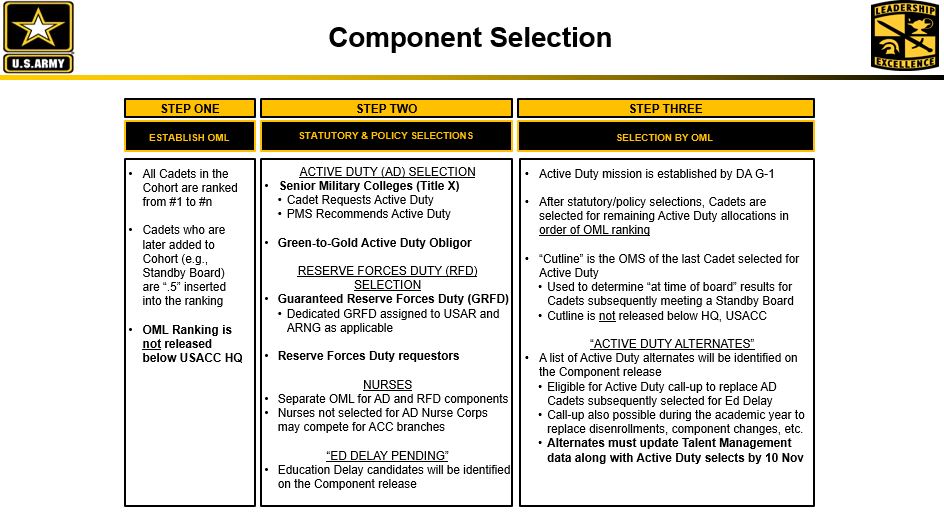
Branching
By September 07, 2020 is when Cadets must have their interim branch preferences submitted to their HRA and Cadets must also update their branch preferences on the Talent Based Branching (TBB) website as well. Cadets must also specify on the TBB website whether they want to submit a Branch Active Duty Service Obligation (ADSO) for the branches they are interested in. Cadets can now submit as many Branch ADSO’s as they want. What the ADSO does is move the Cadet to the top of the bin that the branch has rated the cadet. Each branch gives Cadets either a “Least Preferred”, “Preferred”, or “Most Preferred” rating. The ADSO does not allow Cadets to jump bins, it just puts the Cadet at the top of their rated bin.
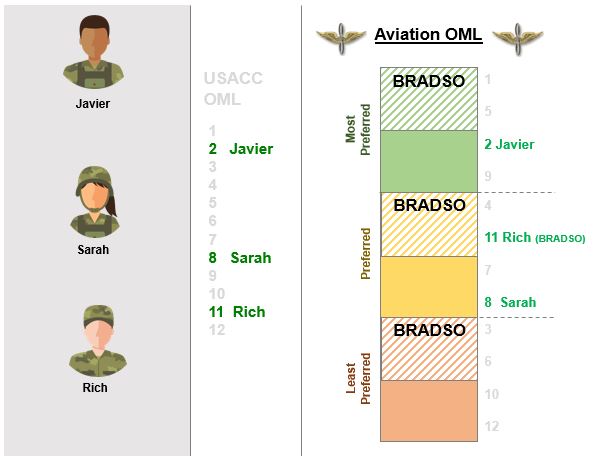
Cadets also volunteer for branch detail assignments through the TBB website as well. A branch detail means you serve in one branch for your lieutenant years before transitioning into another branch when promoted to Captain. Volunteering for a branch detail can increase your odds of receiving a high demand branch. Cadets have until September 07, 2020 to update the TBB website with ADSO and Branch Detail preferences
On October 19, 2020 all accessing Cadets will receive their branch ratings through the TBB website. Cadets can then use these preferences to inform their final branching decision. For example if a Cadet has Infantry initially ranked #1 and Armor #2, but Infantry gave the Cadet a “preferred” rating and Armor gave a “most preferred” rating; the Cadet has the opportunity to change Armor to #1 to ensure they branch armor. Any changes to Cadet branch preferences based off of the interim branch preferences need to be made by October 26, 2020. For Cadets who are commissioning in the Fall 2020 term they will receive their final branching assignment on November 20, 2020 and Cadets commissioning in the Spring 2021 term will receive their branch assignment on December 02, 2020.
Good luck to all the FY21 Cadets going through the new branching process. If anyone has any questions regardless of which ROTC program they belong to, feel free to leave a comment and we will get back to you with a response.
Go ROTC! Go Fighting Eags!
